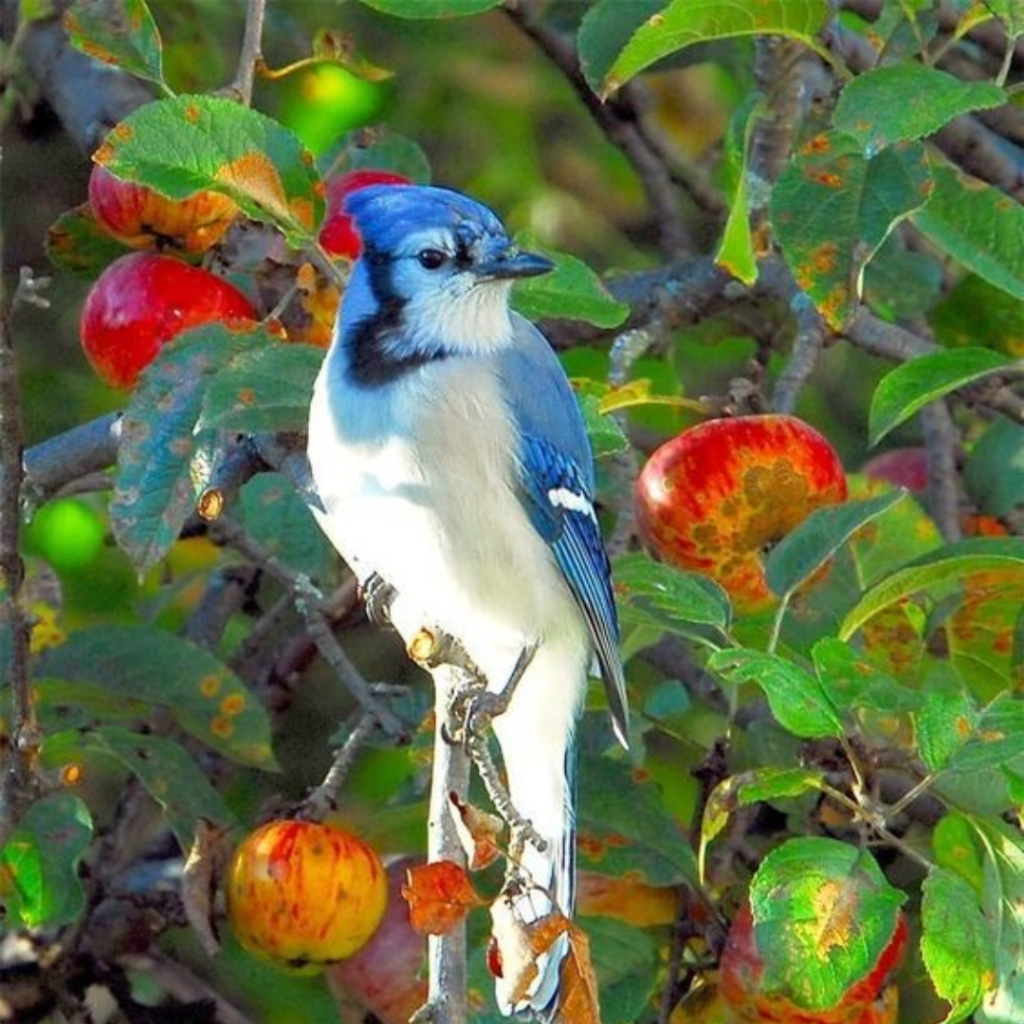Maryland’s diverse landscapes, from the Chesapeake Bay to the Appalachian Mountains, provide a haven for a wide variety of bird species. Many of these birds frequently visit backyards, offering residents a chance to enjoy nature up close. Let’s explore some of the common backyard birds of Maryland, their characteristics, and how to attract them to your outdoor space.
Also Read: What is a Bird That is Also a Term in Golf?
Common Backyard Birds in Maryland

Northern Cardinal
The Northern Cardinal stands out with its:
– Bright red plumage (males) or olive-brown feathers (females)
– Distinctive crest and strong beak
– Year-round presence in Maryland
– Preference for sunflower seeds at feeders

American Robin
The American Robin is known for:
– Reddish-orange breast and dark gray back
– White eye ring
– Frequent lawn visits in search of worms
– Melodious song, often heard at dawn and dusk

Blue Jay
The striking Blue Jay boasts:
– Bright blue feathers with white and black markings
– A prominent crest
– Bold and intelligent behavior
– Attraction to platform feeders with peanuts and sunflower seeds

Carolina Chickadee
This small, energetic bird features:
– A black cap and bib with white cheeks
– Gray wings and back
– A fondness for suet and black oil sunflower seeds
– A cheerful “chick-a-dee-dee-dee” call

Tufted Titmouse
Recognize the Tufted Titmouse by its:
– Gray upper body and white underparts
– Small, pointed crest
– Black forehead
– Love for sunflower seeds and peanuts

Downy Woodpecker
The Downy Woodpecker is identified by its:
– Black and white spotted pattern
– Small size compared to other woodpeckers
– Red patch on the back of the head (males)
– Attraction to suet feeders and tree bark

House Finch
Spot House Finches by their:
– Streaked brown bodies
– Red head and breast in males (orange or yellow variations occur)
– Tendency to visit seed feeders in groups
– Cheerful warbling song

White-breasted Nuthatch
The White-breasted Nuthatch is known for:
– Blue-gray back and white face and underparts
– Black cap (males)
– Ability to climb down trees headfirst
– Preference for sunflower seeds and peanuts

Eastern Bluebird
Look for the Eastern Bluebird’s:
– Vivid blue upper parts and rusty breast (males)
– Softer blue-gray and orange coloration (females)
– Preference for open areas with scattered trees
– Attraction to mealworms and special bluebird feeders

Mourning Dove
Identify Mourning Doves by their:
– Soft gray-brown plumage
– Long, tapered tails
– Peaceful cooing sound
– Preference for ground feeding on seeds
Attracting Birds to Your Maryland Backyard
To invite these feathered friends to your outdoor space:

1. Offer a variety of food sources (seeds, suet, fruits, nectar)
2. Provide fresh water for drinking and bathing
3. Plant native trees, shrubs, and flowers for shelter and food
4. Maintain a pesticide-free yard to ensure a healthy ecosystem
Seasonal Changes in Maryland’s Backyard Birds
Maryland experiences different bird populations throughout the year:
– Spring and Summer: Breeding season brings migratory species like hummingbirds and orioles
– Fall: Watch for migrating warblers passing through
– Winter: Northern visitors like Dark-eyed Juncos and White-throated Sparrows arrive

Bird Watching Tips for Maryland Backyards
Enhance your bird watching experience with these tips:
1. Use binoculars for a closer look without disturbing the birds
2. Keep a field guide or bird identification app handy
3. Observe birds at different times of day for varied activity
4. Participate in citizen science projects like the Great Backyard Bird Count
Conservation and Appreciation
While many of these birds are common, they face challenges:
1. Habitat loss due to urban development
2. Climate change affecting migration patterns and food sources
3. Collisions with windows and buildings
4. Outdoor cats posing a threat to bird populations

You can help by:
1. Creating bird-friendly spaces in your yard
2. Supporting local conservation efforts
3. Educating others about the importance of birds in our ecosystems
4. Reporting bird sightings to scientific databases
Also Read: What Are the 7 Levels of Classification for a Bird?
Conclusion
Maryland’s backyard birds offer a colorful and melodious connection to nature right outside our doors. From the vibrant Northern Cardinal to the acrobatic White-breasted Nuthatch, these feathered visitors bring life and beauty to our outdoor spaces. By providing food, water, and habitat, we can enjoy their presence while contributing to their well-being.
Remember, each bird sighting is an opportunity to appreciate the rich biodiversity of Maryland. Whether you’re a seasoned birdwatcher or just starting to notice your feathered neighbors, take a moment to observe and enjoy these wonderful creatures. Your backyard might just become a favorite spot for both you and the birds!
Pingback: What's the Difference Between Birding and Bird Watching?